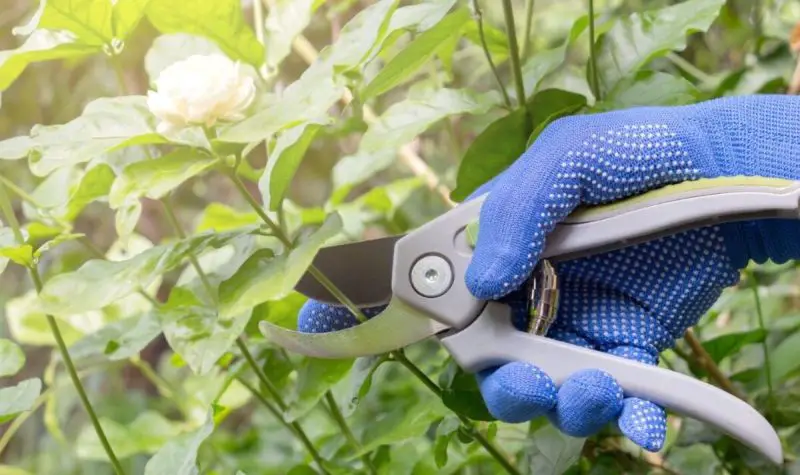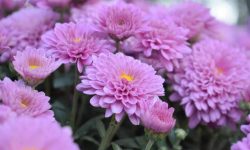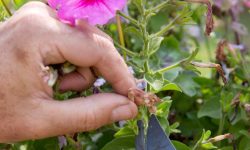Jasmine is cherished for its delicate, fragrant flowers and vibrant green foliage, making it a favorite in gardens and homes alike. Proper pruning is essential to maintain its beauty, encourage abundant blooms, and keep the plant healthy. Without careful trimming, jasmine can become overgrown, tangled, and less productive, reducing both its visual appeal and scent. Learning the right techniques ensures your jasmine remains vigorous and visually stunning throughout the year, whether planted in the ground, trained on a trellis, or grown in containers.
Understanding when and how to prune jasmine allows gardeners to maximize flower production and maintain a balanced structure. Seasonal pruning stimulates new growth, strengthens stems, and improves air circulation, reducing the risk of disease. By following expert tips, you can enhance the plant’s natural fragrance and overall health, creating lush, thriving jasmine that consistently delights the senses. Proper pruning transforms jasmine into a long-lasting, vibrant feature in any garden or indoor space.
Understanding Jasmine Growth and Why Pruning Matters

Jasmine is loved for its elegant vines, fragrant blooms, and lush foliage. However, without regular pruning, the plant can become unruly and less productive. Pruning helps maintain the natural shape, improve airflow, and encourage stronger blooming. It also prevents the plant from wasting energy on unnecessary growth. Understanding the growth cycle of jasmine is key to knowing when and how to prune for best results.
Most jasmine species grow rapidly in warm conditions and can quickly cover trellises or walls. This vigorous growth means they need seasonal pruning to keep them healthy. When left untrimmed, the plant may produce fewer flowers, and tangled stems can become prone to pests or disease. By pruning properly, you guide the plant’s energy into producing more flowers instead of just extra foliage. This results in a longer blooming season and more vibrant displays in the garden.
Another important reason for pruning is to rejuvenate old or woody stems. Jasmine can live for many years, but older stems may stop flowering over time. Pruning them back stimulates new shoots that are more likely to bloom. Proper timing ensures you do not accidentally remove buds that would produce flowers. With consistent care, jasmine remains a long-lasting centerpiece in any garden, offering both beauty and fragrance throughout the seasons.
Why Pruning Jasmine Is Important
Pruning jasmine is more than just shaping a plant; it is a way to maintain long-term health and encourage abundant flowering. Without pruning, jasmine tends to grow quickly in all directions, which can make it look messy and less appealing. Dense, tangled stems also reduce airflow, creating a humid environment that can lead to pests and fungal problems. Regular pruning keeps the plant neat, open, and manageable, ensuring it continues to thrive year after year.
Another major benefit of pruning jasmine is stimulating new growth. Jasmine flowers mostly on new shoots, so cutting back older or weaker stems makes room for vigorous, fresh branches that can produce more blooms. When done at the right time, pruning encourages the plant to channel its energy into creating buds instead of maintaining unnecessary growth. This results in healthier stems, more vibrant leaves, and a generous flush of flowers that enhances your garden’s beauty.
Pruning also helps control the size and direction of your jasmine. Left unchecked, many varieties can grow aggressively, overwhelming nearby plants or structures. By shaping it regularly, you can train jasmine to climb walls, trellises, or fences in a way that complements your landscape. Whether you want a compact shrub, a cascading vine, or a sprawling ground cover, pruning gives you the control needed to achieve your desired look while keeping the plant productive.
When Is the Best Time to Prune Jasmine
Pruning jasmine at the right time is essential if you want to keep the plant both healthy and full of flowers. The ideal pruning period largely depends on the type of jasmine you are growing. For summer-flowering jasmine, the best time to prune is immediately after the blooms fade in late summer. This allows the plant to recover and produce strong growth before the next flowering season. Winter-flowering jasmine, on the other hand, should be pruned right after it finishes blooming in late winter or early spring. Pruning too late in the year may remove buds that would have produced flowers in the following season.
The timing is also connected to the plant’s growth cycle. Jasmine puts a lot of energy into producing flowers, so once the blooming phase ends, it begins to focus on new shoots and leaves. Pruning during this phase encourages fresh growth and ensures that sunlight and air circulation reach all parts of the plant. By following the natural rhythm of the plant, you reduce stress and promote healthier, more vigorous vines. In regions with mild climates, light pruning can also be done throughout the year to manage shape, but heavier cuts should always be reserved for the proper blooming cycle.
For gardeners who want lush walls or trellises filled with jasmine, pruning time is not only about when to cut but also how much to cut back. A well-timed trim after flowering allows the plant to redirect its strength into developing flower buds for the next season. Missing this window can result in fewer flowers or weak growth. If you are unsure of your jasmine type, a good rule is to prune right after the bloom period ends. This way, you preserve future flowers while maintaining the plant’s vibrant and attractive structure.
Best Time to Prune Jasmine
Pruning After Flowering
The best time to prune jasmine is usually right after it has finished flowering. This is because jasmine produces flowers on the previous season’s growth. If you prune too early or too late, you may accidentally remove the shoots that would carry the next round of blooms. After flowering, the plant enters a phase of active growth, which makes it easier for new shoots to emerge and fill out the pruned areas. This timing also ensures that the plant maintains its shape and directs energy into producing stronger stems for future flowering.
When pruning after flowering, you should focus on cutting back overgrown stems and removing any weak or tangled growth. This helps the plant stay tidy while also improving airflow and light penetration. By shaping the jasmine at this stage, you encourage it to put energy into fresh growth that will later support vibrant blooms. This approach balances both aesthetics and plant health, ensuring that your jasmine continues to thrive while setting buds for the next season.
Seasonal Pruning Considerations
While pruning after flowering is ideal, seasonal factors also play an important role in timing. In warmer climates, jasmine may bloom multiple times a year, so light pruning can be done more frequently to maintain shape and encourage repeat flowering. However, in cooler regions where jasmine flowers only once, pruning should be timed more carefully to avoid cutting away next season’s buds. Understanding your local climate helps you decide how often and how heavily to prune.
Seasonal pruning also involves removing dead or damaged stems during the dormant months. This ensures the plant remains healthy and free from disease as it prepares for the next growing cycle. Light trimming in early spring can also help control vigorous growth, but heavy pruning is best reserved for after the main bloom period. By aligning your pruning with the seasons, you not only preserve flowers but also encourage a balanced growth cycle that keeps your jasmine lush, strong, and visually appealing year after year.
Tools and Preparation Before Pruning Jasmine
Before you begin pruning, it is essential to gather the right tools to make the process effective and safe. Clean, sharp pruning shears are the most important tool, as dull blades can damage stems and leave jagged cuts. For larger, older stems, a pair of loppers may be needed to cut through thicker wood. Garden gloves help protect your hands from scratches while handling dense growth. Having disinfectant on hand is also important for cleaning tools between cuts, which reduces the risk of spreading plant diseases.
Preparation involves more than tools alone. You should first inspect the jasmine to understand its growth pattern and identify problem areas. Look for dead, diseased, or tangled stems that need removal. If your jasmine grows on a trellis or support, check its structure and untangle stems if necessary. This makes it easier to cut selectively without harming healthy shoots. Clearing weeds or debris around the plant before pruning also gives you a better working space.
It is also helpful to know your jasmine variety, as different types may bloom on old or new wood. This determines when and how much you should prune. For example, winter jasmine blooms on new growth, while summer jasmine flowers on previous year’s stems. Pruning at the wrong time can remove flower buds and reduce blooming. With careful preparation and the right tools, pruning becomes less stressful and far more rewarding, leading to healthier plants and abundant blossoms.
How to Prune Jasmine Step by Step
Removing Dead and Damaged Wood
The first step in pruning jasmine is to remove any dead, damaged, or diseased branches. These stems can drain the plant’s energy, hinder healthy growth, and reduce flowering. Carefully inspect the plant for discolored, brittle, or diseased wood and use sharp pruning shears to cut them away cleanly. Removing these branches allows the plant to focus energy on healthy growth and improves air circulation within the foliage.
Cutting out dead or damaged wood also helps prevent disease from spreading to healthy parts of the plant. For jasmine grown in containers or confined spaces, it is especially important to remove these branches to reduce the risk of fungal problems. Make cuts close to the main stem, leaving no long stubs that could harbor pests. This foundational step sets the stage for stronger, healthier growth and prepares the plant for the next pruning phases.
Shaping for Better Growth
After removing unhealthy branches, the next step is shaping the jasmine to encourage balanced and attractive growth. Pruning helps guide the plant’s form, ensuring stems grow evenly and chutes sprout where they can support more flowers. Remove crossing or overcrowded branches to allow sunlight and air to reach all parts of the plant, which promotes dense foliage and abundant blooms.
Shaping the plant also improves long-term structural health. A well-proportioned jasmine resists breakage and can withstand wind better. For climbing varieties, train and secure long stems along trellises to guide vertical growth. For container-grown jasmine, pruning can maintain a rounded or compact form for easier care. Proper shaping ensures that the plant remains both beautiful and vigorous throughout the growing season.
Controlling Size and Spread
Controlling the size and spread of jasmine is essential for maintaining a tidy and manageable plant. Jasmine can grow vigorously, and without regular pruning, it may overtake nearby plants, fences, or trellises. To prevent this, focus on trimming back overly long shoots and thinning crowded areas. This not only keeps the plant under control but also allows better light penetration and airflow, which supports overall health and encourages more flowering.
Maintaining size and spread also helps the plant fit harmoniously within your garden design. For climbing varieties, direct growth along supports to prevent vines from sprawling in unwanted directions. In containers, regular trimming ensures the plant does not outgrow its pot and helps maintain a compact, attractive shape. By consistently monitoring and pruning for size and spread, you can enjoy a jasmine plant that is both visually appealing and vigorous, with abundant blooms year after year.
Pruning Different Types of Jasmine
Winter Jasmine
Winter jasmine blooms on old wood, so the ideal time to prune is immediately after flowering in late winter or early spring. Removing spent flowers and trimming back older stems encourages the plant to develop new shoots for the next season. Light pruning also helps maintain a balanced structure and prevents the plant from becoming overgrown or unruly, ensuring that it remains attractive throughout the year.
Additionally, pruning winter jasmine improves air circulation within the plant. Dense or tangled stems can restrict airflow, making the plant more susceptible to fungal infections. By cutting back carefully, gardeners can reduce these risks while guiding the plant’s growth along trellises, walls, or fences. This ensures that winter jasmine remains both visually appealing and healthy, providing fragrant blooms season after season.
Summer Jasmine
Summer-flowering jasmine produces blooms on new growth, so pruning should occur immediately after the main flowering period, usually in late summer or early autumn. Cutting back old or weak stems encourages vigorous new shoots, which will support flowers in the following season. This approach helps maintain a tidy, manageable shape, preventing the plant from becoming excessively woody or tangled.
Regular pruning also allows better light penetration and airflow, which is essential for strong growth and abundant blooms. Training long stems along supports like trellises or arbors ensures the plant grows in the desired direction. By timing pruning correctly and focusing on healthy new growth, summer jasmine remains lush, fragrant, and visually striking year after year.
Indoor Jasmine
Indoor jasmine, such as Jasminum polyanthum, benefits from careful pruning because potted plants can quickly become overcrowded. Light trimming throughout the growing season encourages airflow, prevents disease, and promotes healthier blooms. Regular maintenance keeps stems from tangling and allows the plant to grow compactly in limited indoor spaces.
After flowering, a more substantial pruning helps stimulate new growth for the next season. Indoor jasmine responds well to shaping, which can enhance its decorative value in homes or patios. By combining light seasonal pruning with careful post-bloom trimming, indoor jasmine stays vibrant, fragrant, and visually appealing, providing year-round enjoyment even in confined spaces.
Common Mistakes to Avoid When Pruning Jasmine
Over-Pruning
Over-pruning is one of the most common mistakes gardeners make when caring for jasmine. Many assume that cutting back heavily will encourage faster growth, but this can have the opposite effect. Removing too many branches at once shocks the plant, reduces energy reserves, and limits its ability to produce flowers. The plant may take longer to recover, resulting in weak shoots and sparse blooms. Over-pruning can also disrupt the natural structure of the plant, leaving it looking uneven or messy.
A better approach is gradual pruning over multiple sessions. Focus on removing only dead, damaged, or overcrowded stems while leaving healthy branches intact. This preserves flower buds for the next season and encourages steady, balanced growth. By pruning selectively, jasmine maintains strong stems, vibrant leaves, and consistent blooms. Gradual trimming also allows gardeners to shape the plant carefully, creating fuller and more attractive growth over time. This method reduces stress on the plant and ensures long-term health while supporting abundant flowering year after year.
Pruning at the Wrong Time
Pruning at the wrong time is another common mistake that can dramatically reduce flowering. Each jasmine variety has its own growth and flowering cycle, and trimming at an inappropriate stage may remove flower buds that were intended for the next bloom. This reduces the number of flowers and may cause uneven growth. Pruning too late can also stress the plant, limiting energy for new shoots and impacting overall health.
To avoid this, gardeners must understand their jasmine variety. Summer-flowering jasmine should be pruned immediately after the main blooms fade, while winter jasmine requires trimming right after flowering. Indoor jasmine may also have specific seasonal needs depending on light and temperature. Following the proper timing ensures strong new growth, increased flower production, and healthier development. Aligning pruning with the plant’s natural cycle also preserves its shape and appearance. This careful approach allows jasmine to produce vibrant blooms consistently while remaining resilient against stress.
Neglecting Dead or Diseased Wood
Neglecting dead or diseased wood is a critical error when pruning jasmine. Dead stems can harbor pests and fungal infections that spread to healthy parts of the plant. They also block light and reduce airflow, which can weaken the plant and lower its blooming potential. Over time, failing to remove these stems can lead to poor growth and make the plant more vulnerable to environmental stress.
Regular inspection and pruning of dead or diseased wood is essential. Use sterilized tools to avoid spreading disease and make clean cuts close to the main stem. Removing problematic wood allows the plant to redirect energy to healthy shoots, producing stronger growth and more abundant flowers. Maintaining this practice consistently ensures jasmine remains vigorous, attractive, and resilient. By keeping the plant free from decaying or infected branches, gardeners support long-term flowering and create a robust, thriving jasmine display throughout the growing season.
How Pruning Affects Flowering and Fragrance
Pruning jasmine directly influences both the quantity and quality of its flowers. Jasmine blooms mostly on new shoots, so removing old or weak stems encourages the plant to produce fresh growth that will support more blossoms. If pruning is neglected, the plant may become overgrown and woody, resulting in fewer flowers and less fragrance. Proper pruning ensures that energy is directed toward stems that will yield blooms, maximizing both flower production and aroma.
The timing and method of pruning also affect the intensity of jasmine’s fragrance. By trimming immediately after flowering, gardeners allow the plant to focus on developing new shoots rather than maintaining old growth. This creates more flower buds in the next cycle, which in turn produces a stronger scent. Overcrowded or tangled stems can block sunlight and airflow, weakening the flowers and reducing their fragrance. Strategic pruning opens up the plant, improving light penetration and air circulation, which enhances both bloom quality and scent.
In addition to quantity and fragrance, pruning helps maintain a visually appealing plant structure. Removing excess or improperly positioned stems creates a balanced and open canopy, allowing each flower to develop fully. This not only increases the visual impact of the jasmine but also ensures that the fragrance spreads evenly across the garden or indoor space. Consistent pruning over multiple seasons builds a healthy, robust plant that consistently produces abundant, fragrant blooms, making jasmine a standout feature in any landscape or home environment.
Pruning Jasmine in Containers
Pruning jasmine in containers requires extra care because potted plants are more limited in space and resources than those planted in the ground. Overgrown roots and dense foliage can quickly overwhelm a pot, leading to reduced flowering and slower growth. Regular pruning helps maintain a manageable size while encouraging healthy new shoots. Focus on trimming dead, damaged, or excessively long stems to allow light and air to reach all parts of the plant. This promotes balanced growth and maximizes flower production within the confined space of a container.
Container-grown jasmine also benefits from strategic shaping. Since the plant cannot spread naturally, guiding its growth is essential. Prune to create an attractive canopy, train stems along supports, or maintain a compact shape depending on your design goals. By controlling the direction of growth, you prevent overcrowding and ensure that each shoot receives adequate sunlight and airflow. This results in stronger, more vigorous stems that support abundant blooms and maintain the plant’s aesthetic appeal indoors or on patios.
Another important aspect of container pruning is maintaining root health. Heavy pruning above ground should be balanced with careful root management. Consider repotting every couple of years, trimming any overly long or crowded roots, and replenishing fresh soil. This combination of careful pruning and root maintenance ensures that container jasmine remains healthy, resilient, and consistently productive, offering beautiful flowers and a pleasant fragrance throughout the growing season.
Long-Term Care After Pruning Jasmine
After pruning jasmine, ongoing care is crucial to support recovery and encourage future flowering. Immediately following pruning, water the plant thoroughly to help it recover from stress and stimulate new shoot growth. Mulching around the base can help retain soil moisture and regulate temperature, reducing stress on the roots and promoting healthy development of new stems. Regular monitoring of light, water, and nutrients ensures that the plant remains in optimal condition during its recovery period.
Fertilization also plays a key role in long-term care. Apply a balanced fertilizer to provide essential nutrients for both foliage and flower production. For container jasmine, choose a slow-release fertilizer to maintain consistent nutrient availability. Avoid over-fertilizing, which can lead to excessive leaf growth at the expense of blooms. Proper feeding after pruning ensures that energy is directed toward vigorous new shoots and abundant flowers in the following season.
Long-term pruning care also involves periodic inspections for pests and diseases. Removing any damaged or infected stems promptly prevents problems from spreading and keeps the plant healthy. Supporting new growth with stakes or trellises as needed helps maintain the desired shape and prevents stems from breaking. With consistent care, jasmine will thrive after pruning, producing strong, fragrant, and visually striking blooms year after year.
FAQ About How to Prune Jasmine
How often should I prune jasmine for best results?
Prune jasmine at least once a year after its main flowering period. Summer-flowering varieties benefit from trimming in late summer, while winter jasmine should be pruned right after blooming. Light maintenance pruning can be done throughout the growing season to remove dead or overcrowded stems and maintain shape.
Can I prune jasmine heavily without harming the plant?
Heavy pruning can stress jasmine if done at the wrong time. Always avoid removing more than one-third of the plant at once. Focus on dead, damaged, or overcrowded stems. Gradual, careful pruning ensures healthy growth, encourages flowering, and prevents shock while maintaining the plant’s natural structure and vigor.
Does pruning affect jasmine’s fragrance?
Yes, pruning influences fragrance by promoting new shoots and flower production. Removing old or weak stems redirects energy into healthy growth. Properly timed pruning increases the number of blooms, ensuring a stronger, more consistent scent. Overcrowded or tangled growth can reduce fragrance and overall flower quality.
How do I prune indoor jasmine differently?
Indoor jasmine requires careful pruning because potted plants have limited space. Trim lightly throughout the growing season to control size, improve airflow, and maintain shape. After flowering, prune more substantially to stimulate new growth. Indoor pruning ensures compact, healthy plants with abundant blooms and strong fragrance indoors.
What common mistakes should I avoid when pruning jasmine?
Avoid over-pruning, cutting at the wrong time, or neglecting dead or diseased wood. Over-pruning reduces flowers, wrong timing can remove buds, and leaving dead wood encourages pests and disease. Proper pruning ensures balanced growth, stronger stems, abundant flowers, and long-term plant health.
Conclusion
Proper pruning is essential for keeping jasmine healthy, vibrant, and full of fragrant blooms. By understanding the right timing, techniques, and care for different varieties, gardeners can encourage new growth, improve airflow, and maintain balanced, attractive shapes. Consistent pruning not only maximizes flower production but also strengthens stems and enhances the plant’s overall resilience. Whether growing jasmine in the ground, on trellises, or in containers, careful trimming ensures long-term beauty and abundant fragrance. With the right approach, your jasmine will thrive season after season, creating a stunning and aromatic display.






